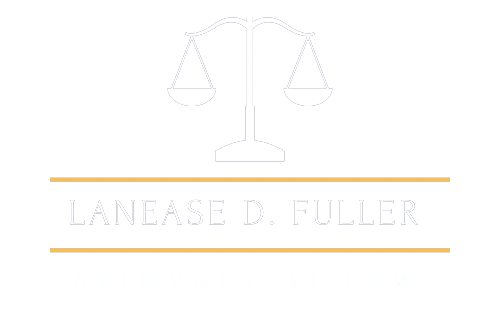Navigating the murky waters of malpractice can be daunting for anyone. The complexity of legal procedures, coupled with the stress of having been wronged, can make it challenging to know where to begin. Attorney Lanease D. Fuller, with extensive experience in handling malpractice cases in Houston, shares insights into the most pressing questions clients often have.
1. What Qualifies as Malpractice?
Malpractice is a failure on the part of a professional to meet the standard of conduct and care which is expected of them in their professional community, leading to harm or injury to their client or patient. This could encompass a wide range of errors or omissions across various professions. In the medical realm, examples include but are not limited to, a misdiagnosis, a delay in diagnosis, surgical errors, improper treatment, or failure to obtain consent.
n the legal field, malpractice might manifest as missing filing deadlines, mismanaging client funds, or failing to provide competent representation. Essential to the concept of malpractice is the deviation from the norms and standards that are widely accepted in the professional’s field of work. Such standards are often established by professional bodies and are meant to ensure that clients and patients receive a reasonable level of expertise and care.
2. How Do I Know If I Have a Malpractice Case?
Determining whether you have a malpractice case involves a detailed examination of three critical components. First, there must be clear evidence that the professional owed you a duty of care, a fundamental requirement in all professional-client relationships. Secondly, it must be demonstrated that the professional breached this duty through an act of negligence or failure to act as a reasonably competent professional would under similar circumstances. Finally, there must be a direct causal link between this breach of duty and the harm or loss you suffered. This could manifest as physical injury, financial loss, or other damages. Gathering detailed documentation of your experience, seeking expert evaluations, and analyzing the outcomes are essential steps in this process. Consulting with an attorney who specializes in malpractice cases is crucial, as they can offer a professional evaluation of your situation to determine if it meets the legal criteria for malpractice.
3. What Are the First Steps in Pursuing a Malpractice Claim?
Initiating a malpractice claim begins with an in-depth consultation with a malpractice attorney to discuss the details of your case. This step is vital as it sets the foundation for your claim. Attorney Lanease D. Fuller stresses the importance of collecting and organizing all relevant documentation related to your case. This includes, but is not limited to, medical records, contracts, correspondence, and any other evidence that could support your claim. This documentation will play a crucial role in building a strong case. An experienced attorney will review this information to understand the nuances of your situation and advise you on the best course of action. They will also inform you about your legal rights, the potential challenges your case may face, and the strategies to overcome these obstacles. This initial step is pivotal in ensuring that your claim is handled with the diligence and expertise it deserves.
4. How Long Do I Have to File a Malpractice Claim?
The timeframe for filing a malpractice claim, known as the statute of limitations, varies significantly by jurisdiction and the type of malpractice in question. This legal deadline is crucial as it determines the window within which you must initiate legal action to seek redress for the harm you’ve suffered. In Texas, for instance, the statute of limitations for medical malpractice claims is generally two years from the date the malpractice occurred or the date when it reasonably should have been discovered. This timeframe can vary for other types of malpractice, such as legal or professional malpractice. Given these time-sensitive constraints, it is of utmost importance to consult with an attorney specializing in malpractice claims as soon as you suspect malpractice. This ensures that your claim is pursued within the legal deadlines, preserving your right to seek compensation for your injuries and losses.
5. What Can I Recover in a Malpractice Lawsuit?
In a malpractice lawsuit, the range of damages you may be entitled to recover is broad, designed to compensate you for the full extent of your losses and suffering. This can include compensation for direct financial costs such as medical expenses incurred due to the malpractice, and lost wages if the injury affected your ability to work. Beyond these economic damages, you may also be eligible for non-economic damages, which cover pain and suffering, emotional distress, and loss of enjoyment of life.
In cases where the malpractice was particularly egregious, punitive damages might also be awarded. These are intended not as compensation for the plaintiff but as a punishment for the defendant and a deterrent against future misconduct. The specifics of what you can recover will depend heavily on the details of your case, including the severity of the malpractice, the extent of your injuries, and the impact on your life. An experienced malpractice attorney can provide a more detailed assessment based on the specifics of your situation.
6. How is Liability Determined in a Malpractice Case?
In malpractice litigation, establishing liability is a multifaceted process that hinges on proving that the defendant’s actions or inactions deviated significantly from the accepted standards of care within their professional community. This involves a comparative analysis against what is expected from a reasonably competent professional in the same field, under comparable circumstances. To substantiate this, the plaintiff must demonstrate not just a departure from these standards, but also a direct causation linking this breach to the harm or injury sustained.
The details of such cases often require the input of expert witnesses who specialize in the same field as the defendant. These experts provide critical testimony that elucidates the standard of care expected, how the defendant’s conduct failed to meet this standard, and how such failure was directly responsible for the plaintiff’s injuries. This expert analysis is crucial, as it translates the technical aspects of professional standards and practices into understandable evidence that can support the plaintiff’s claim of negligence or misconduct.
7. How Long Does a Malpractice Case Take?
The time frame for resolving a malpractice case is inherently unpredictable and can span a broad spectrum, from a few months to several years. The duration is influenced by a host of factors, not least of which is the case’s inherent complexity. Complex cases involving intricate details and requiring extensive review of records, expert testimony, and legal analysis tend to take longer. The volume of evidence and the depth of discovery needed—processes through which both parties gather factual information from each other—also play a significant role in determining the timeline.
Additionally, the court’s calendar and availability can cause delays, as can the willingness of both parties to negotiate. Settlement negotiations are a common aspect of malpractice cases, offering a potential path to resolution without a trial. However, these negotiations themselves can be time-consuming, as they involve back-and-forth discussions to reach an agreement that satisfies both parties. The overall duration of a case is thus contingent on these and other variables, each contributing to the time it takes to achieve resolution or reach a verdict.
8. Will My Case Go to Trial?
The trajectory of a malpractice case, whether it settles out of court or proceeds to trial, is influenced by numerous factors and remains uncertain throughout much of the process. Many malpractice claims are resolved through settlements negotiated outside of court, providing a quicker and often less contentious resolution. However, not all cases are suited for settlement, particularly if the parties involved cannot agree on liability, the extent of damages, or other critical aspects of the claim. In such instances, proceeding to trial becomes necessary to resolve these disputes.
Attorney Lanease D. Fuller approaches each case with a rigorous commitment to preparation and advocacy, operating under the presumption that it may go to trial. This level of preparedness ensures that, should negotiations fail to yield a satisfactory settlement, her clients are well-positioned to present a strong case before a judge or jury. The decision to go to trial also depends on strategic considerations, including the strength of the evidence, the potential impact of expert testimony, and the legal nuances of the case. This strategy underscores the importance of having a skilled attorney who can navigate the complexities of malpractice litigation, whether that path leads to a negotiated settlement or a trial verdict.
9. How Much Will It Cost to Hire an Attorney for a Malpractice Case?
The financial aspect of hiring an attorney for a malpractice case is a significant consideration for many clients, given the potential costs involved in pursuing legal action. Attorney Lanease D. Fuller, like many in the field of malpractice law, employs a contingency fee structure. This arrangement means that the client does not bear any upfront costs; instead, the attorney’s compensation is contingent upon securing a financial recovery for the client, whether through settlement or trial. The contingency fee is a predetermined percentage of the recovery amount, agreed upon at the outset of the attorney-client relationship.
This model aligns the interests of the client and attorney, as the attorney’s fee is directly tied to the case’s success. It also removes financial barriers that might prevent individuals from seeking legal redress for malpractice. Should the case not result in a financial award, the client is generally not responsible for paying attorney’s fees, although they may be responsible for other case-related expenses. It’s essential for clients to have a clear understanding of the fee agreement, including how fees and expenses are calculated, to avoid any surprises. This transparency ensures that clients can make informed decisions about pursuing their malpractice claims.
10. Why Should I Choose Attorney Lanease D. Fuller for My Malpractice Case?
Attorney Lanease D. Fuller brings a wealth of experience and a personal commitment to justice for her clients in Houston. Understanding the profound impact of malpractice, she works tirelessly to ensure her clients receive the compensation they deserve. Her approach combines meticulous preparation, expert resources, and compassionate client care, making her a formidable advocate in your corner.
If you believe you have been a victim of malpractice, it’s crucial to act swiftly and seek professional advice. Attorney Lanease D. Fuller is dedicated to guiding her clients through every step of the process, ensuring they are fully informed and empowered to make the best decisions. For more information or to schedule a consultation reach out to our team today.
Lanease D. Fuller Law
4615 S. Frwy St. 820
Houston, TX 77051
713-439-7400
View our Google Listing


